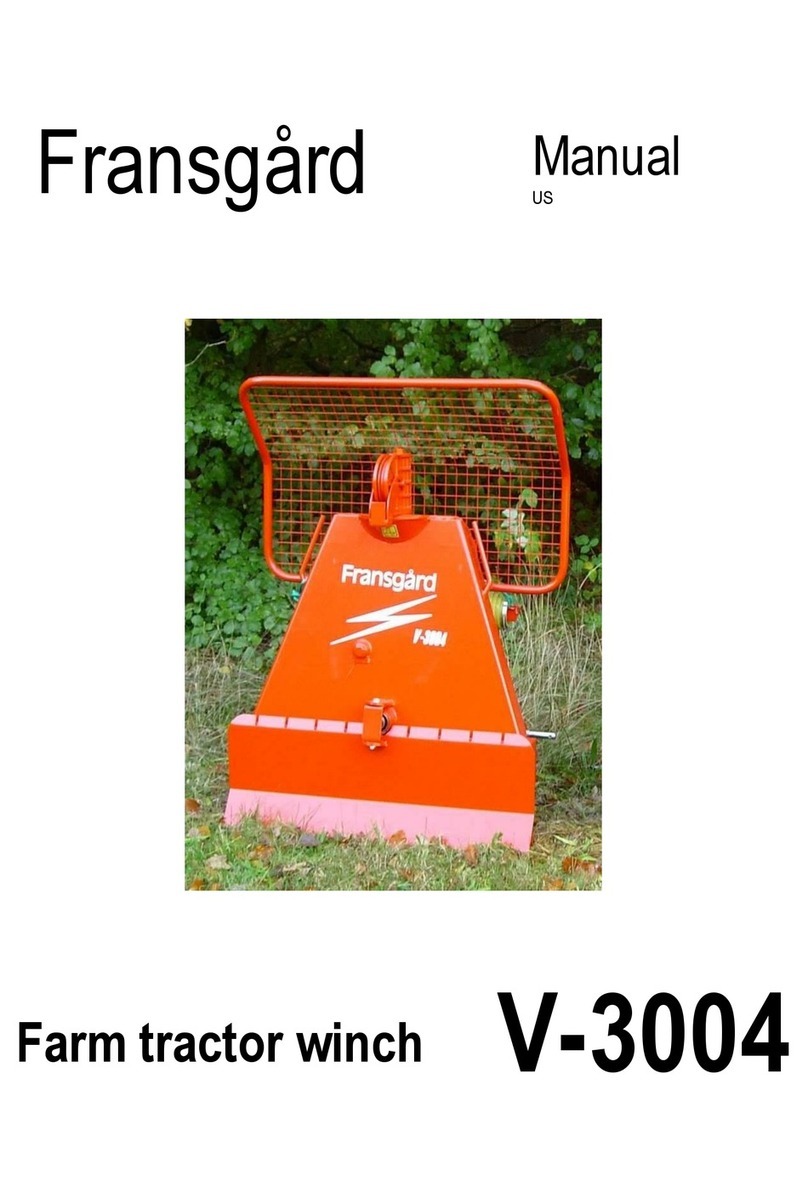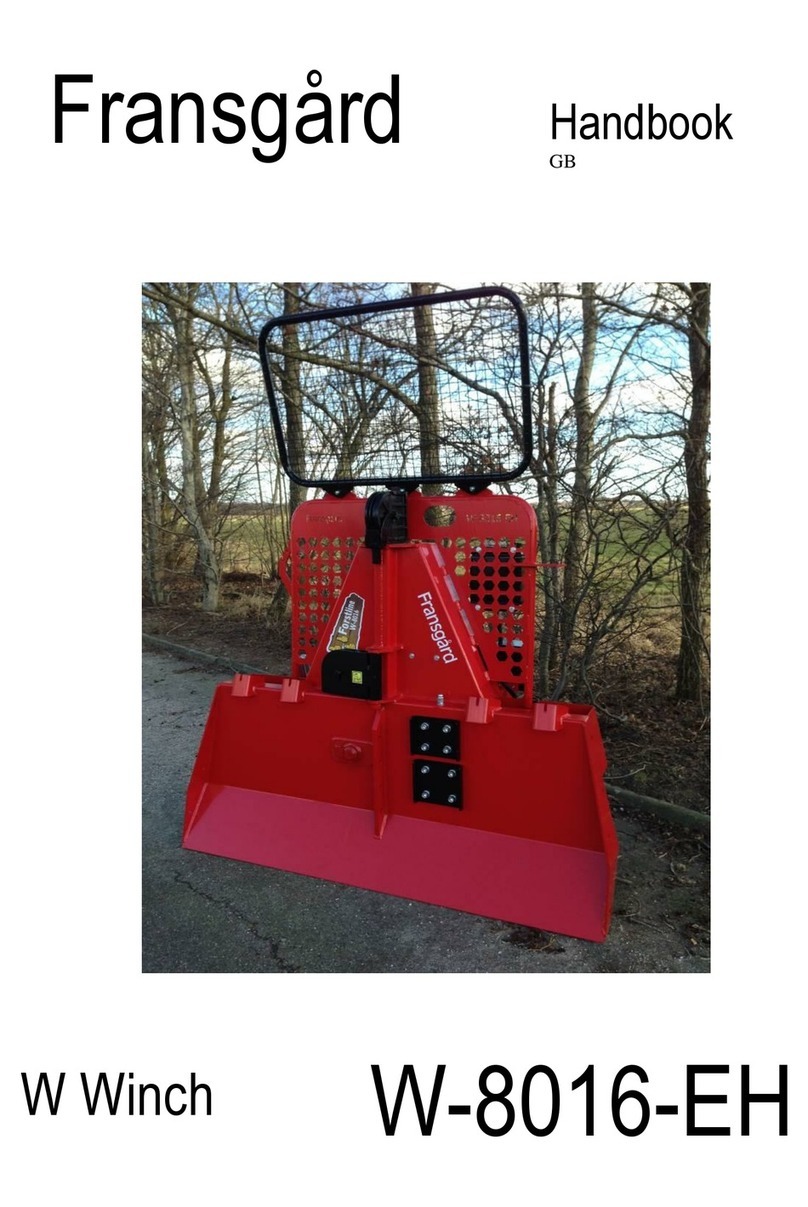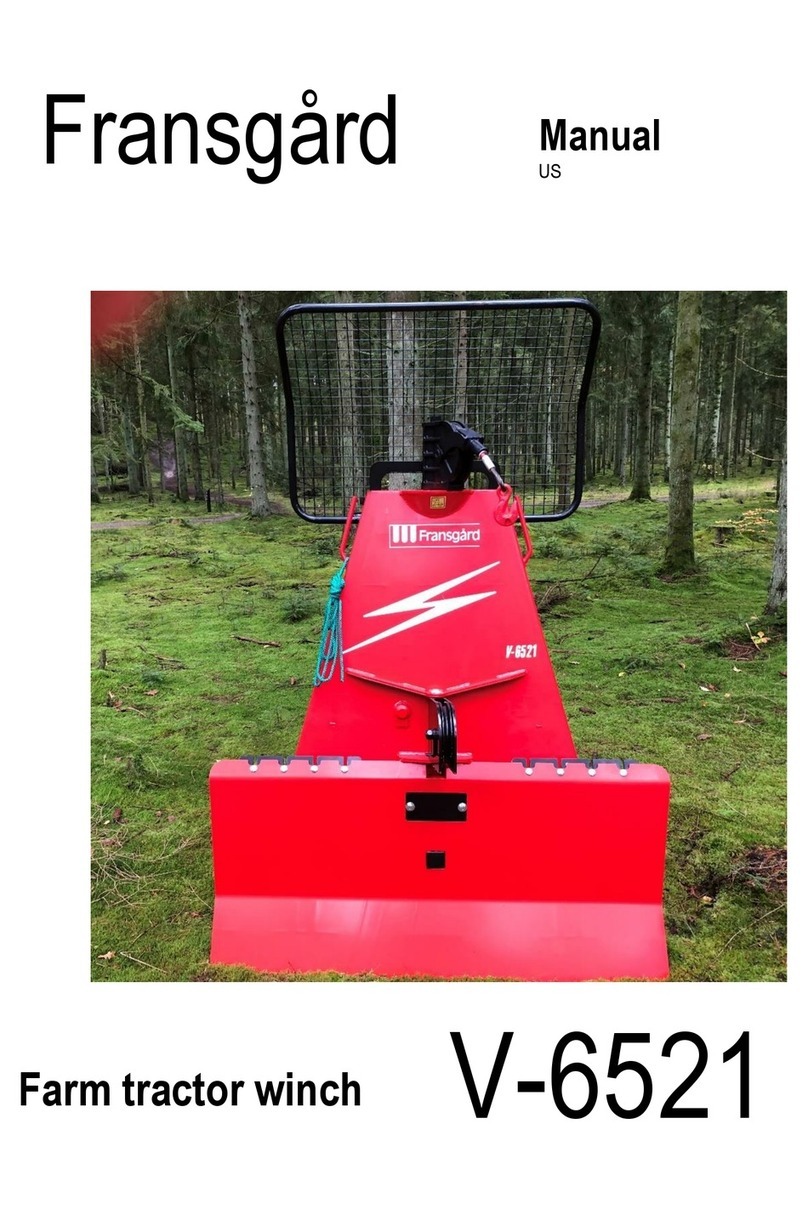
3
TECHNICAL SAFETY INFORMATION WHEN USING A W WINCH TO
CLEAR TIMBER
1. Avoid occupational accidents!
The relevant accident-prevention rules issued by the relevant insurance companies
and stipulated in the instruction manual must be observed!
2. The W winch must only be operated and maintained by qualified and reliable persons
over the age of 18 who are familiar with this work.
3. Wear personal protective equipment (hard hat, safety shoes, protective gloves)!
4. Solo work is only permitted when it is possible to make emergency calls!
5. Before use, but at least once per work day, check the W winch to ensure that it is in
perfect working order (guard, dead man’s switch, overload protection, braking
function); deficiencies must be professionally rectified.
6. The winch engine must be stopped when remedying faults, and during repair and
maintenance work. It is not sufficient only to stop the winch engine; the tractor’s
engine must also be stopped.
7. Do not deactivate any winch safety devices.
8. Use only load-absorption devices such as end hooks, steel cable, chains, remote
rollers and nylon straps suitable for the winch’s tractive force.
9. When pulling in logs, use only low-stress cables of an adequate strength
corresponding to what is specified on the W winch’s type plate and in the user
instructions. The breaking force of cables and chains used must be at least twice the
tractive force specified for the winch’s lowest cable.
10. Defective cables and chains must be replaced.
11. Use only cable of such a length that, when the entire cable is wound onto the drum,
there is still at least 1 1/2 times the diameter of the cable between edge of the cable
drum and the uppermost cable.
12. Before starting the winch, the operator must check that doing so would not expose
anyone to danger.
13. The operator must be aware that when loaded, except in hazardous situations, the
cable must always be wound around the drum at least twice (set trailing brake
correctly)!
14. Only wind the cable up under load!
(pull the cable out completely once daily, possibly several times, and wind it
uniformly!)
15. The winch may only be operated from a safe position so that the operator is not
exposed to danger from the device itself, the load, the cable or the securing devices.
The tractor cab is deemed a safe position when there is an adequately dimensioned
protective wire guard between the winch and the driver’s seat.
When operating the winch outside of the cab, the operator must be protected to the
same degree, e.g. by the tractor itself or by positioning themselves a sufficient
distance away from the tractor, e.g. behind a tree.
During radio-controlled winch operation, when the operator is walking in the same
direction as the log, they must remain in the vicinity of where the cable is attached.
Logs may be accompanied laterally next to the cable’s attachment point, whereas cut
wood may be accompanied at an angle behind the load –see Fig. 1.
16. From their position, the winch operator must always be able to see the load being
moved; otherwise, it must be ensured that the load’s path is monitored by other
persons who are in constant contact with the operator in the form by pre-agreed
signals.
17. During work with the cable, do not stand between the load and the winch or in the
hazardous angle between the winch, turning device and load –see Fig. 2.


































